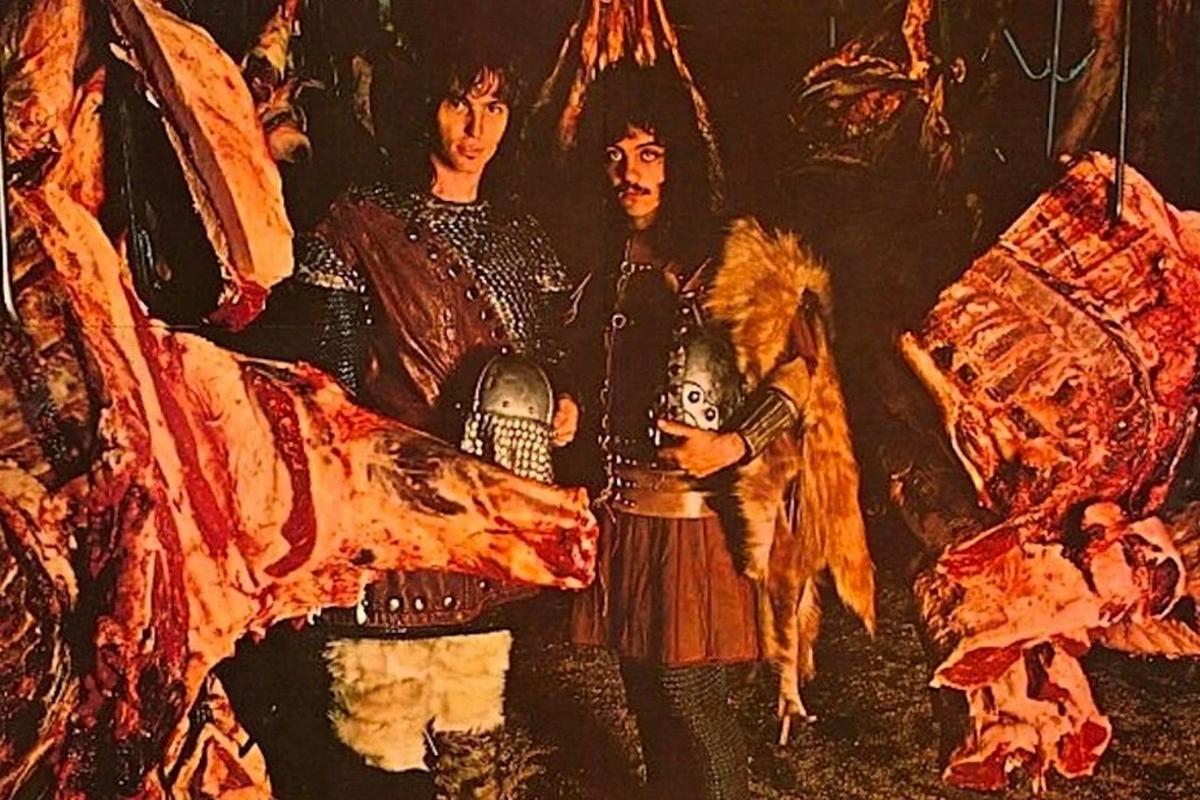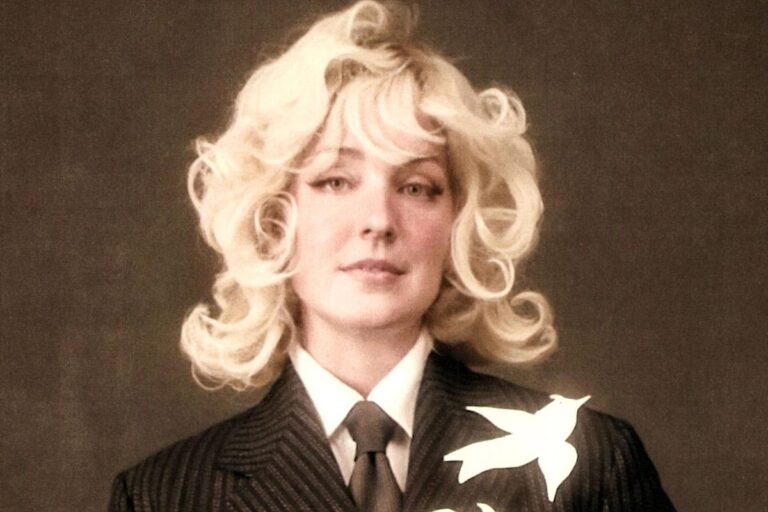Imagine if Billy Joel had joined Deep Purple instead of writing “Piano Man.” In a sense, that’s what happened when he formed his ill-fated heavy metal band Attila in 1969.
He and collaborator Jon Small had already been in another band together, the Hassles. Though the Long Island group had scored a deal with United Artists Records, after two unsuccessful albums in 1967 and 1969, Small and Joel were frustrated. The pair felt that they were more serious about music than their bandmates. They decided to break away and move in a different direction.
Where Did the Idea for Attila Come From?
Led Zeppelin’s 1969 debut album was an important catalyst. “It just pulverized me when I heard it,” Joel shares in the new HBO Original documentary Billy Joel: And So it Goes, which arrived today (July 18). “It was like hearing Beethoven’s Ninth Symphony for the first time.” “We liked Led Zeppelin,” Small adds. “We liked all of the heavy metal bands.”
Now living in a house together, they made an attempt to write songs in that same vein — even if they were ill-equipped for the task. “I wanted to be a heavy metal band, but I’m not a guitar player,” Joel explains in the film. “I’m a keyboard player. So I had to try to figure out how to wire an organ through amplifiers.”
READ MORE: Billy Joel: ‘And So it Goes’ Movie Review
Listen to Atilla’s ‘Wonder Woman’
Attila’s Name and How it Worked Out
You guessed it, the tag had ancient origins, inspired by Attila the Hun. “We’re gonna destroy the world with amplification,” he remembers. “We just want to make as much noise as possible.” The results, from their viewpoint, were not pretty. “It’s probably one of the worst bands of all time,” Small says now. “I didn’t know one person who liked what we were doing,” Joel concurs.
They landed a deal for an album with Epic Records, but the group wouldn’t last long once 1970’s Attila hit the shelves. It was a mix of their efforts being rejected by fans and critics — and personal complications that arose between Joel and Small when the pianist began having an affair with his partner’s wife, Elizabeth Weber. It all spelled the end of the band.
Is Attila’s Music Really That Bad?
This particular writer can already hear the sighs from his coworkers as he steps forward and prepares to say nice things. Because in the decades after its release, plenty of unkind things have been written about the Attila album. Critic Stephen Thomas Erlewine wrote in an AllMusic review, “Attila is undoubtably the worst album released in the history of rock & roll — hell, the history of recorded music itself.” But when considering the music in context with what other bands were doing at the time, Attila doesn’t feel that weird. The organ is reminiscent of the stylings employed by Deep Purple’s Jon Lord and there’s also a psychedelic vibe to what they’re doing. The whole combination feels like Attila could have easily shared the stage with bands like Blue Cheer and Iron Butterfly.
What Did Billy Joel Do After Attila’s Failure?
The future Piano Man decided to go it alone and released his debut solo album, 1971’s Cold Spring Harbor. Though the record had future fan favorites “She’s Got a Way” and “Everybody Loves You Now” in the track listing, it was doomed by a mastering error. The album as it was released featured all of the songs playing at a faster speed than they were originally recorded.
It cast an unfortunate pall on Joel’s debut offering, something which Steve Cohen, one of the executive producers of Billy Joel: And So it Goes feels like has been addressed in a new way. “I think that Cold Spring Harbor gets a much better light in this film,” he tells the UCR Podcast. “If there is anything I would want Billy to go in and re-record, it would be some of those songs [from the album] with his voice today. [It would be interesting to hear] the way he would express those lyrics today, looking back from a 20-year old to now a 76-year old.”
Listen to Billy Joel’s ‘She’s Got a Way’
READ MORE: Top 20 Billy Joel Songs
“I think we’d get some really amazing interpretations of ‘Tomorrow is Today’ and ‘You Can Make Me Free’ and a couple of those [other] songs that I think I never appreciated as much because the Cold Spring Harbor album was so mishandled,” he continues. “It never really was able to get legs after that. [Billy Joel: And So it Goes] gives you a window into the very first singer-songwriter album that he did that’s really kind of a precursor [to his subsequent success.]
How Did Billy Joel Finally Find Success?
After some initial chart success with songs like “Piano Man” and “The Entertainer,” things were more of a struggle leading up to the arrival of 1977’s The Stranger. But even that legendary landmark album could have been dead on arrival. “When The Stranger was played for the record company, they didn’t hear a single,” Cohen explains. “Elizabeth, his first wife and manager, had to fight for every nickel of tour support [and assistance from] independent promotions [people] and radio. It was not easy. And on top of it, you learn in the film that there’s Elizabeth, his wife, coming in [and] telling these guys, you know, what [it was] for and [they needed to] get behind this. They had to do it, but they didn’t like it.”
“It was never easy. Look, the critics vilified every product he came out with. It wasn’t like Bruce Springsteen…you know, everything Bruce did got great reviews,” he adds. “Billy would constantly get these people that would poke at him. We were always fighting [the criticism]. It never really stopped.”
Thanks to Billy Joel: And So it Goes, fans can see that the songwriter eventually got the last laugh and has continued to do so across the years of his long career. Performance montages follow the journey of songs like “Piano Man” and “Scenes From an Italian Restaurant” from the smaller venues of the earlier years to the stadiums that are now singing along with those same songs.
Cohen has been witness to nearly every moment of those travels, since the day he signed on as Joel’s lighting director in 1974. “It was pretty tenuous. There was no hit records. But we played theaters, we played some field houses and he started to build this fan base. You know, every time we came back to the college in in New Paltz, and there’d be 500 more people. We worked really hard those first couple of years. Like, we were on the road eight months out of the year. We sort of fell into this little traveling army. We never looked back. We just kept showing up and gigging. Then we would finish the tour, Billy would go back and write a record, record it and we’d start all over again.”
Watch the Trailer for ‘Billy Joel: And So it Goes’
Billy Joel Albums Ranked
From ‘Cold Spring Harbor’ to ‘River of Dreams,’ we run through the Piano Man’s LPs from worst to best.
Gallery Credit: Matt Springer



